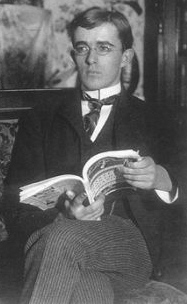Irving Langmuir
| Irving Langmuir | |
|---|---|
 |
|
| Born |
January 31, 1881 Brooklyn, New York, U.S. |
| Died | August 16, 1957 (aged 76) Woods Hole, Massachusetts, U.S. |
| Nationality | American |
| Fields | Chemistry Physics |
| Alma mater |
Columbia University University of Göttingen |
| Doctoral advisor | Walther Nernst |
| Known for | Inventor of the high-vacuum tube |
| Notable awards |
|
Irving Langmuir /ˈlæŋmjʊr/ (January 31, 1881 – August 16, 1957) was an American chemist and physicist. His most noted publication was the famous 1919 article "The Arrangement of Electrons in Atoms and Molecules" in which, building on Gilbert N. Lewis's cubical atom theory and Walther Kossel's chemical bonding theory, he outlined his "concentric theory of atomic structure". Langmuir became embroiled in a priority dispute with Lewis over this work; Langmuir's presentation skills were largely responsible for the popularization of the theory, although the credit for the theory itself belongs mostly to Lewis. While at General Electric from 1909–1950, Langmuir advanced several basic fields of physics and chemistry, invented the gas-filled incandescent lamp, the hydrogen welding technique, and was awarded the 1932 Nobel Prize in Chemistry for his work in surface chemistry. The Langmuir Laboratory for Atmospheric Research near Socorro, New Mexico, was named in his honor as was the American Chemical Society journal for Surface Science, called Langmuir.
Irving Langmuir was born in Brooklyn, New York, on January 31, 1881. He was the third of the four children of Charles Langmuir and Sadie, née Comings. During his childhood, Langmuir's parents encouraged him to carefully observe nature and to keep a detailed record of his various observations. When Irving was eleven, it was discovered that he had poor eyesight. When this problem was corrected, details that had previously eluded him were revealed, and his interest in the complications of nature was heightened.
...
Wikipedia
